In this NewsFlash we hear how the genes of squished insects on your windscreen could help monitor biodiversity, take a step towards paper thin cameras and find the link between viral infection and chronic fatigue syndrome. Plus, we get the low down on this year's Nobel Prize winners!
In this episode
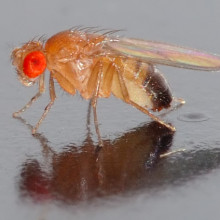
Splattered windscreen bugs unveil a biodiversity treasure-trove
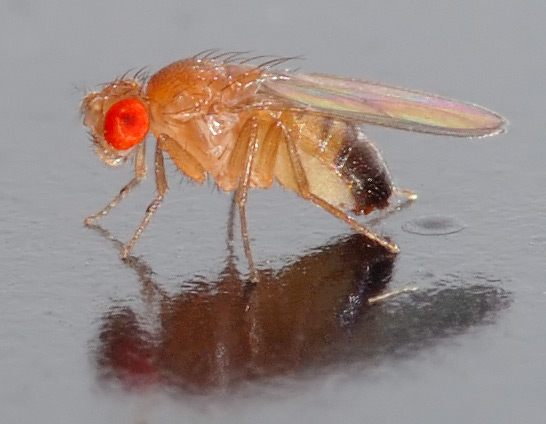 How many living species are there in the world?
How many living species are there in the world?
It's a huge question that no-doubt comes with a really huge answer. But finding that answer is no mean feat. Sending scientists out into the world to find, describe and name all the living things there are is a massive task.
Now scientists from America have come up with a possible new way of making the process a lot quicker and easier, and it involves scraping the splatter of dead bugs off a car windscreen.
In a paper in the journal Genome Research - freely available online - a research team led by Anton Nekrutenko of Penn State University have developed a piece of free online software called Galaxy to help make it easier to estimate biodiversity based on DNA sequences extracted from the environment - a process known as metagenomics.
Until now, metagenomics has been used to assess the diversity of microscopic creatures, including bacteria living in deep sea sediments or on the surface of human skin. Essentially it involves taking samples from the environment, reading sequences of DNA from those samples and using that to estimate the number of different species present in that environment.
If enough of the organisms present in your sample have already had their entire genomes sequenced, then it is possible to know what particular species live there.
The big problem with doing this is sifting through the vast amount of information that metagenomics generates. How do you go from having a bunch of DNA sequences to gaining a meaningful idea of the diversity of species in your samples?
That's where Nekrutenko and colleagues come in. They've created a metagenomic pipeline - information in one end, results out of the other - for other researchers to use and develop to make this whole process simpler and quicker.
They tested it out by driving two cars, one from Pennsylvania to Connecticut, and another from Maine to New Brunswick in Canada. They then collected the squashed insects that landed on the windscreens of the two cars and sequenced the DNA in each sample.
The team identified a number of insect and bacteria groups in their samples, and interestingly discovered a difference in the diversity of the two samples.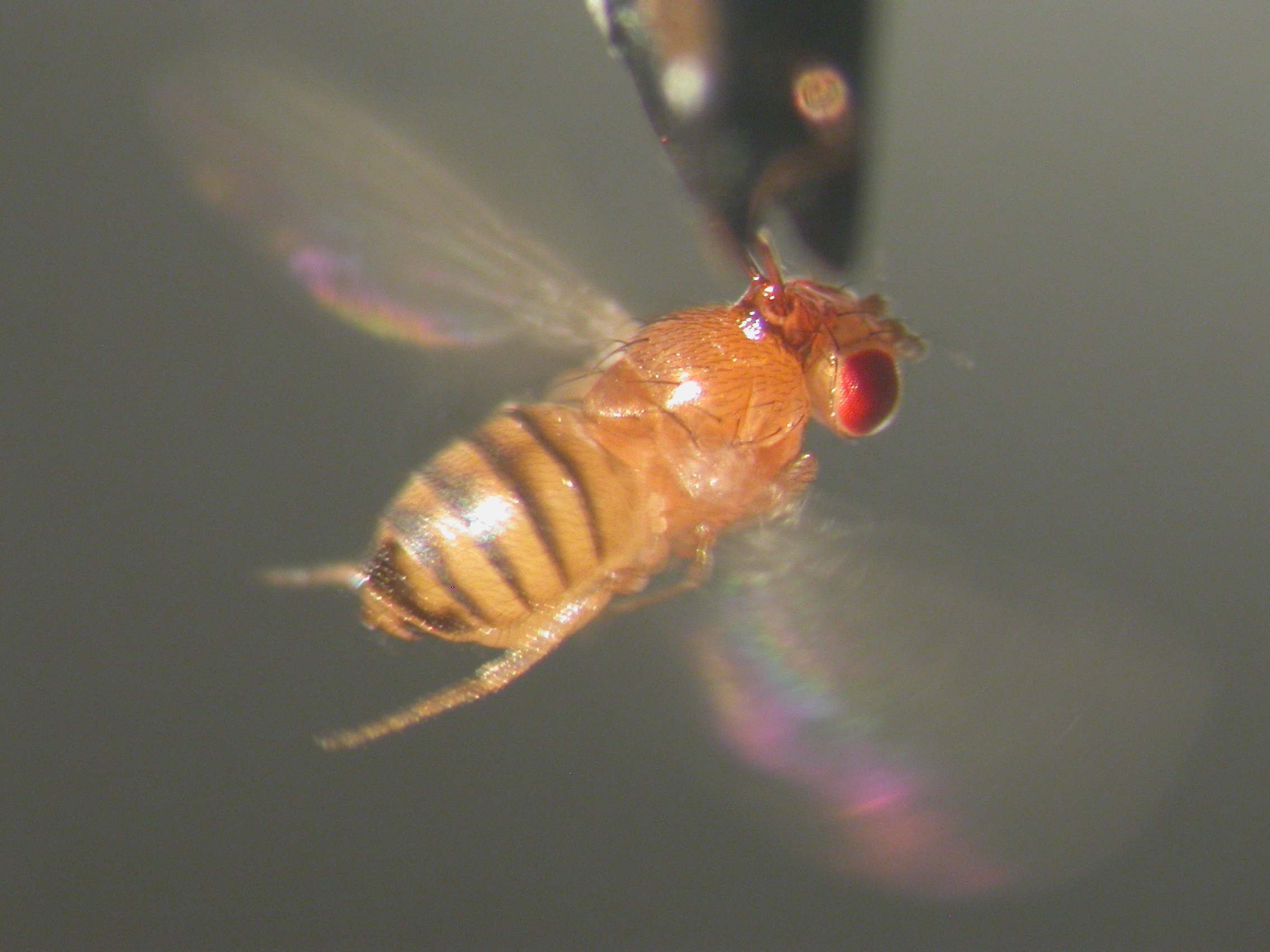
Clearly, the number of species that can be identified is limited by the number that have had their genomes fully sequenced. But the hope is that as sequencing techniques become easier and cheaper, the catalogue of available species will expand rapidly in the future.
As techniques like this develop they could provide a useful tool in rapidly assessing biodiversity in the world around us, for example to study the impacts of all sorts of human activities on wildlife.
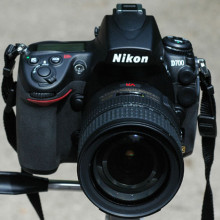
Memory Chip Camera
Digital cameras have got immensely better and far cheaper over the last 20 years but they are still not perfect . They are still expensive and complicated partly because they are analog devices, each pixel converts light into a variable amount of charge, and then circuitry has to digitise this voltage converting it to a number normally from 0 to 256. This also means that they don't have a large dynamic range - they are bad at taking photos of bright and dark things at the same time, as you run out of numbers.
Edoardo Charbon from the Technical University of Delft, in the Netherlands may have a solution: Get rid of the analog part entirely and make each pixel only return a 1 or 0. 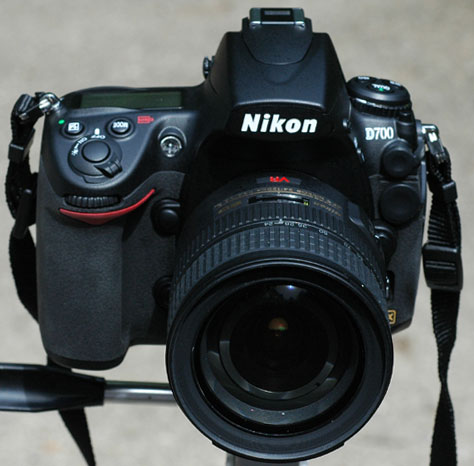 This might sound like a stupid way of getting a good image, but because this means that each sensor is so much more simple you can get at least 100 times more sensors onto your chip if not more. And because sensors of this size tend to be quite noisy - they will sometimes read a 1 when they should be reading a zero. You can group hundreds of them together and the total number of 1's will change smoothly with the light level.
This might sound like a stupid way of getting a good image, but because this means that each sensor is so much more simple you can get at least 100 times more sensors onto your chip if not more. And because sensors of this size tend to be quite noisy - they will sometimes read a 1 when they should be reading a zero. You can group hundreds of them together and the total number of 1's will change smoothly with the light level.
The really useful bit is that because of the statistics, the value you read out will change very rapidly with light level when it is dark, but slowly when it is light - in the same way as your eyes, allowing you to take photos of bright and dark objects at the same time.
All the sensors you are using to collect light for one pixel don't have to be in the same place, so you could build a camera with hundreds of small lenses on an image sensor which software then overlays to produce a good image. Allowing you to make the camera extremely thin.
This would all be very interesting if it was expensive to make these new chips, but it turns out that conventional memory chips are light sensitive if you strip off their black plastic. and they have billions of sensors so are ideal for this type of operation, although they may not be optimised for collecting light, so might not catch so much light.
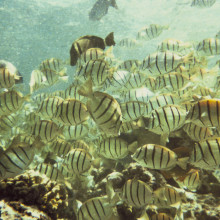
Fisheries mixed up by climate change
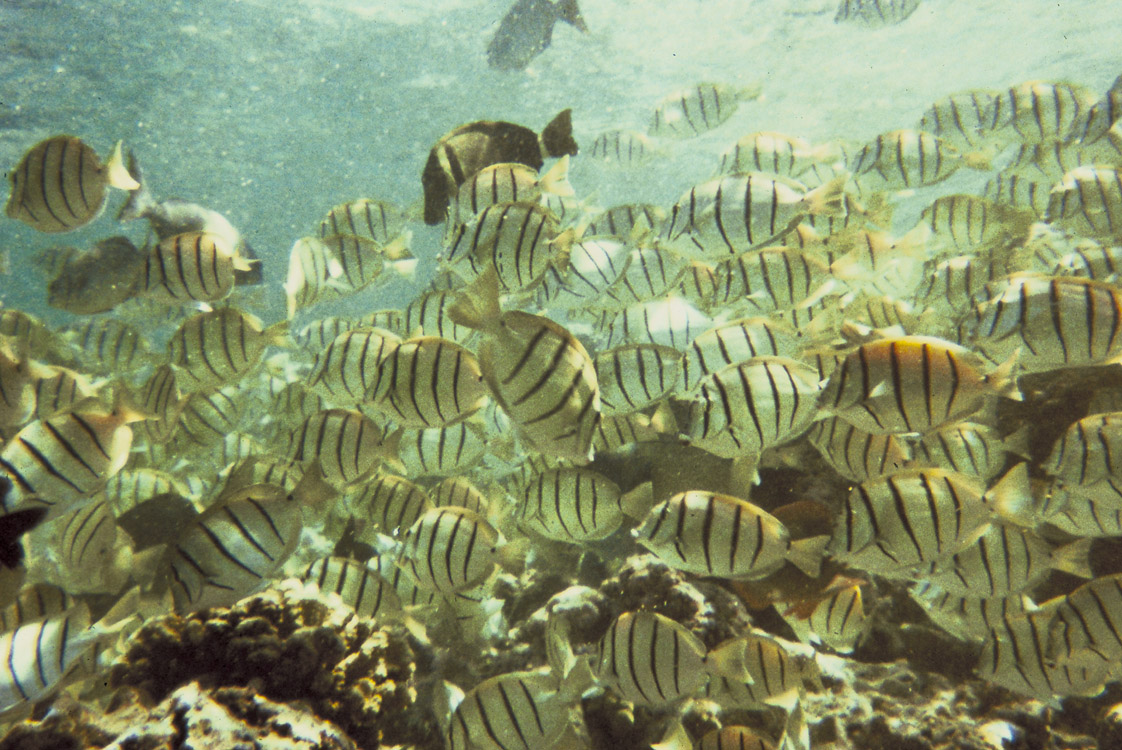 More predictions have emerged of how climate change is likely to affect the planet. This time, scientists from the Sea Around Us project based at the University of British Colombia in Canada, have turned their attention to how the shifting climate could impact the world's fisheries. And as you might imagine, it is not good news.
More predictions have emerged of how climate change is likely to affect the planet. This time, scientists from the Sea Around Us project based at the University of British Colombia in Canada, have turned their attention to how the shifting climate could impact the world's fisheries. And as you might imagine, it is not good news.
Within the next 50 years, catches of fish in the tropics could drop by 40% because of the changing climate. However, in areas further north and south, fisheries could in fact expand by as much as 30 or even 70%.
William Cheung, Daniel Pauly and colleagues have run computer models of over a thousand marine species encompassing around 70% of the world's fisheries, ranging from krill to sharks, plugging in environmental and biological factors that affect their distribution.
The team then ran a simulation of how those factors are likely to change and hence how fish populations will respond under two different climate change scenarios - although not including the worst case scenario that the International Panel of Climate Change (IPCC) have put forward.
Under these models, certain countries will see fish disappearing from their nets, including Chile, China, the US and Indonesia. And that is simply because fish will not tolerate in higher temperatures.
Fish that can swim far enough, could potentially move to cooler waters in the north and south. This is why the models predict increased fish catches in some countries notably Russia, Norway, Greenland and Alaska.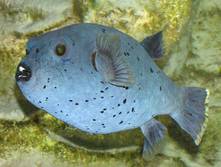
Fish that aren't able to swim far enough could go locally extinct as the climate changes.
For people living in poorer parts of the world who rely heavily on the sea for a source of food and income, this could spell disaster, especially given that other studies predict that climate change will lead to on-land food shortages in similar regions.
Published in the journal Global Change Biology, the results of this study are likely to be a conservative view of the changes that are due to come. The researchers did not, for example, consider how the increasing acidification of the oceans will affect fish distributions.
And of course, with predictions of the increasing collapse of fisheries due to overexploitation, the overall prognosis for the oceans is not a good one.
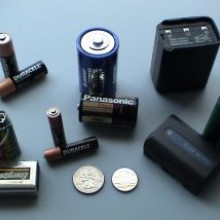
Tiny nuclear battery
Modern electronics is getting smaller and more capable all the time, and all sorts of sensors and communication systems are being developed to sense chemicals, forces, etc and communicate them back to a base station. But you still have to power the systems, and chemical batteries have a limited life, and get less efficient in space as they get smaller.
 One obvious incredibly high density form of energy is from radioactive decay. Thi'sstores at least 100 times as much energy as the same amount of chemicals. The problem is getting the energy out. Various spacecraft generate energy from the heat produced by the decay but this is inefficient, particularly in high temperatures, and doesn't scale down well.
One obvious incredibly high density form of energy is from radioactive decay. Thi'sstores at least 100 times as much energy as the same amount of chemicals. The problem is getting the energy out. Various spacecraft generate energy from the heat produced by the decay but this is inefficient, particularly in high temperatures, and doesn't scale down well.
Another approach is to use the radiation to directly stimulate a structure like a solar cell, which will produce electricity in the same way as it would with light, this can be scaled down to be very small. The problem is that the radiation damages the crystal structure of the semiconductors in the cell and makes them less and less efficient.
Researchers at the university of Missouri may have come up with around this problem - use a semiconductor which is not crystaline and is in fact a liquid. they have used Selinium and radioactive Sulphur 35 as the radioactive source to produce a battery smaller than a 2p coin. It is at present not very powerful about 16nW with an effciency of about 1.2% which doesn't degrade over time.
This is not very much power but enough for some applications and of course this is very early days so it should get a lot better with new developments.

18:29 - The 2009 Nobel Science Prizes
The 2009 Nobel Science Prizes
Richard Van Noorden, Nature
Chris - Well also this week, we've of course have the Nobel Prizes being awarded and before that, the IgNobel's - but that's a different story. And we're joined now by Richard Van Noorden who is an Assistant News Editor with Nature and he's going to tell us a bit more about them. Hello, Richard.
Richard - Hi, Chris.
Chris - Welcome back to the Naked Scientists. So tell us a bit about the Nobels this week. Who got what?
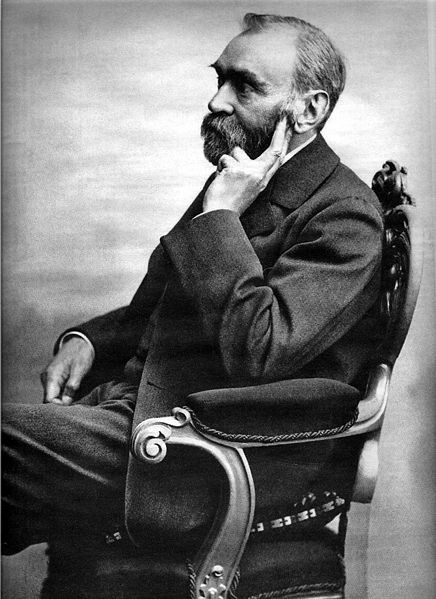 Richard - Well interesting that you should be talking about cameras and CCDs and how to turn lights into electronics because the Physics Prize this week went to Willard Boyle and George Smith for their work on inventing the CCD, the thing in your digital camera that turns optical light into a digital picture. And also, to Charles Kao and he worked on fibre optic cables, those billions of kilometres of fibre optic cables spanning the globe and the light bounces along inside them by total internal reflection. And it's a very efficient way of carrying the signal.
Richard - Well interesting that you should be talking about cameras and CCDs and how to turn lights into electronics because the Physics Prize this week went to Willard Boyle and George Smith for their work on inventing the CCD, the thing in your digital camera that turns optical light into a digital picture. And also, to Charles Kao and he worked on fibre optic cables, those billions of kilometres of fibre optic cables spanning the globe and the light bounces along inside them by total internal reflection. And it's a very efficient way of carrying the signal.
Chris - Indeed, we couldn't basically have the internet without fibre optics, could we?
Richard - Exactly, so. Now the other prizes in Physiology or Medicine went to Elizabeth Blackburn, Carol Greider and Jack Szostak for the their work on telomeres. These are essentially the caps at the end of your chromosomes, the things your DNA is wrapped up in and they're sort of protective caps. What Blackburn and Greider and Szostak found was exactly how these telomeres work and what they do. What happens is, whenever your cells divide you need to make new cells, and you need to copy your DNA. The DNA polymerase, the enzyme that reads your DNA can't quite read to the end of the chromosome and it would get frayed like a piece of frayed string. And you can imagine your cells would keep dividing and your chromosomes would keep fraying and in the end, your DNA would actually degrade. And what these telomere caps do is they add on to the end of the chromosome, they're repetitive DNA structures, they keep getting built in there every time. And so, they prevent the cells that carry them from degrading, but you also need an enzyme to build them up called telomerase, that builds up the telomeres. This is for example, is what you have in cells that are immortal. Cells that never ever stop dividing.
Chris - Cancerous cells?
Richard - Yes, cancerous cells. So many, many cells that turn cancerous also have this enzyme telomerase. But not just cancerous cells. Also stem cells, those cells that can turn to into many other different types of cells. So, what they did, what Blackburn and Greider and Szostak did, is work out how these process is working and what the structures are. And nowadays, the hope is that we could perhaps use this to understand stem cells better possibly to attack tumour cells, cancerous cells, and really, the possibilities are endless here.
Chris - What about Chemistry, another subject dear to my heart?
Richard - Yeah, Chemistry Prize. Another biological prize interestingly enough. It went to Ada Yonath, Venkatraman Ramakrishnan who works in Cambridge just a few miles away from where you are and Thomsa Steitz in the US. And their prize was for working out the structure of the ribosome, the protein-making factory in all of our cells. What the ribosome does is it takes DNA which is, as it were, the blueprint and then it has to translate that into the proteins, the things that actually do the work in your cells that buzz around, and do all the reactions. And Yonath back in the 1980s decided that this enormous ribosome structure contains over a million atoms, she decided that she'd try to crystallize it so you could bounce x-rays through it and from the way they were scattered, work out where the atoms were. Everybody else thought this was a ridiculous idea, but she did manage to crystallize some ribosomes by taking some ribosomes from organisms that lived in the dead sea, at very high temperatures. Their ribosomes are very stable and easier to crystallize. And then Ramakrishnan and Steitz came along and they worked out the exact structure of the ribosome. They actually completed this task in 2000. Now, what's interesting about this is we're now just working on antibiotics that can attack the ribosomes of bacteria. Remember, you need your ribosomes to make proteins. So, what we're trying to work on, in fact, Steitz's group have a company that are doing this, is to get antibiotics that by attacking ribosomes, prevent bacteria from making proteins. And therefore, stop the bacteria dividing. This could be a way to basically attack bacteria that have become resistant to the antibiotics we have at the moment.
Chris - Fantastic. Well, Richard thank you for joining us to tell us all about that and we're going to ask you to comment on the Peace Prize, somewhat controversial of course. Thank you very much. That's Richard Van Noorden who is from the journal, Nature bringing us up to speed on this week's Nobel Prize winners.









Comments
Add a comment